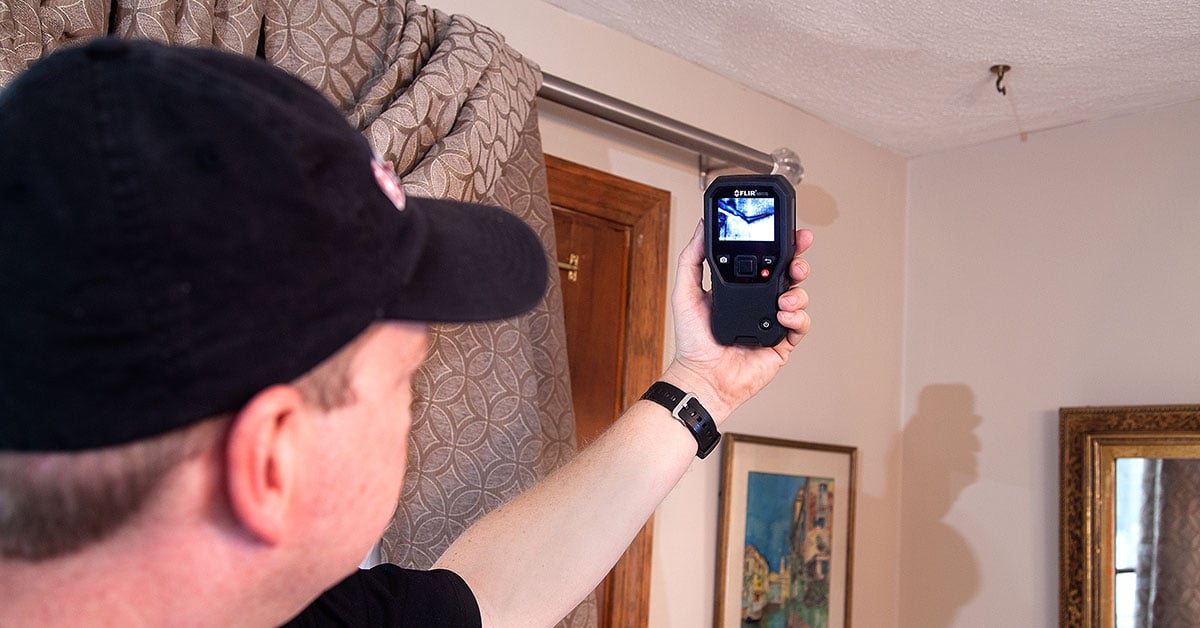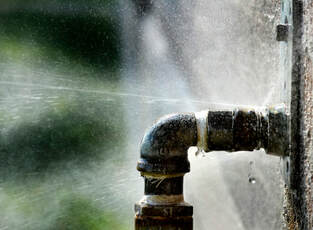Guide To Water Leak Detection At Home
Guide To Water Leak Detection At Home
Blog Article
This great article listed below involving Leaking water lines is exceedingly enlightening. Read it yourself and see what you think about it.

Early detection of dripping water lines can minimize a potential calamity. Besides saving you cash, it will minimize the irritation and also aggravation. The minute you find a leak, calling your plumber for fixings is the most effective service. Some small water leakages might not be noticeable. If you can not spot it with your naked eyes, here are some hacks that aid.
1. Take A Look At the Water Meter
Inspecting it is a surefire method that assists you discover leakages. If it moves, that indicates a fast-moving leak. This indicates you may have a sluggish leakage that might even be underground.
2. Inspect Water Usage
Evaluate your water costs and also track your water consumption. As the one paying it, you should see if there are any kind of discrepancies. If you identify sudden changes, despite your intake coinciding, it means that you have leakages in your plumbing system. Keep in mind, your water costs ought to fall under the same range each month. An abrupt spike in your bill indicates a fast-moving leak.
Meanwhile, a consistent increase each month, despite having the very same routines, shows you have a slow leak that's likewise slowly escalating. Call a plumber to thoroughly examine your residential or commercial property, specifically if you really feel a cozy area on your flooring with piping below.
3. Do a Food Coloring Test
When it comes to water intake, 30% originates from toilets. Examination to see if they are running properly. Decrease flecks of food shade in the storage tank as well as wait 10 minutes. There's a leak in between the storage tank as well as bowl if the shade in some way infiltrates your bowl throughout that time without flushing.
4. Asses Exterior Lines
Do not fail to remember to inspect your exterior water lines also. Needs to water seep out of the link, you have a loose rubber gasket. One tiny leak can lose bunches of water as well as surge your water bill.
5. Assess the circumstance and evaluate
Property owners must make it a behavior to examine under the sink counters and also inside cupboards for any type of bad odor or mold and mildew development. These two warnings show a leak so timely interest is needed. Doing routine inspections, also bi-annually, can conserve you from a major problem.
Check for discolorations and damaging as most devices as well as pipelines have a life expectations. If you presume leaking water lines in your plumbing system, do not wait for it to intensify.
Early detection of dripping water lines can alleviate a prospective catastrophe. Some little water leaks may not be visible. Checking it is a surefire method that helps you discover leaks. One little leakage can squander loads of water and spike your water expense.
If you think dripping water lines in your plumbing system, don't wait for it to escalate.
WARNING SIGNS OF WATER LEAKAGE BEHIND THE WALL
PERSISTENT MUSTY ODORS
As water slowly drips from a leaky pipe inside the wall, flooring and sheetrock stay damp and develop an odor similar to wet cardboard. It generates a musty smell that can help you find hidden leaks.
MOLD IN UNUSUAL AREAS
Mold usually grows in wet areas like kitchens, baths and laundry rooms. If you spot the stuff on walls or baseboards in other rooms of the house, it’s a good indicator of undetected water leaks.
STAINS THAT GROW
When mold thrives around a leaky pipe, it sometimes takes hold on the inside surface of the affected wall. A growing stain on otherwise clean sheetrock is often your sign of a hidden plumbing problem.
PEELING OR BUBBLING WALLPAPER / PAINT
This clue is easy to miss in rooms that don’t get much use. When you see wallpaper separating along seams or paint bubbling or flaking off the wall, blame sheetrock that stays wet because of an undetected leak.
BUCKLED CEILINGS AND STAINED FLOORS
If ceilings or floors in bathrooms, kitchens or laundry areas develop structural problems, don’t rule out constant damp inside the walls. Wet sheetrock can affect adjacent framing, flooring and ceilings.
https://www.servicemasterbyzaba.com/blog/how-to-detect-water-leakage-in-walls/

Hopefully you enjoyed our excerpt about Locating water leaks. Many thanks for taking time to browse our piece. Enjoyed reading our post? Please share it. Help other people discover it. Bless you for your time. Please stop by our blog back soon.
Report this page